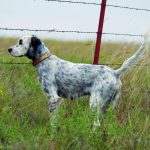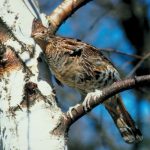Pheasant Forecast 2016: The Traveling Wingshooter
As reported in the article, 2015 Pheasants Wrap: Trending Up (June/July 2016), pheasant populations spiked up dramatically across most of the range last year, following a healthy increase in 2014. All good news. The reality check was that the depths of the previous crash and the CRP habitat loss necessitated more than a couple years of favorable conditions to make things bright again. Stated or implicit, pheasant population recovery was going to take a run of three to five years of excellent weather and related habitat conditions. Hold your breath.
Pheasant hunters can now exhale! The two-year (2014 and 2015) swing of mild winters and near-optimal spring and summer weather continued, in large part, for a third year across the pheasant range. The winter was exceedingly mild, and spring conditions were superb in most locations. The fall outlook hinges on the outcome of summer weather patterns, but at press time the pheasant biologists issued a near-unanimous statement of hope that pheasant populations would be ratcheted up another notch in 2016.
South Dakota remained the number one pheasant state in the Nation with a harvest of 1.26 million pheasants last season, in line with the estimated harvest of most years in the late 1990s and early 2000s. Last year’s pheasants-per-mile index of 3.80 was more than double of that in 2013 and similar to that of 2011, so recovery to levels approaching the most recent version of the glory days was within reach. The ceiling for pheasant production has likely been reduced by habitat loss; South Dakota has 976,000 acres of CRP whereas it had 1.5 million acres at the recent pheasant peak. Nevertheless, things are looking good for a memorable pheasant season this fall
“Habitat conditions were generally in good shape during the primary nesting season in response to ample moisture,” said Travis Runia, South Dakota Game, Fish & Parks. “Some portions of southern South Dakota likely received detrimental amounts of rain during late April and early May, which may have reduced nesting success in localized areas. By mid-summer, drought was creeping into the western and northern pheasant belt, which can impede chick survival; but the impacts are not expected to be critical. Overall, the outlook for pheasants is favorable.”
The pheasant population surge in Iowa is even more pronounced. The 2015 August roadside survey yielded 24.0 pheasants per route (not mile), 52 percent above the 10-year average and the highest statewide average since 2007. The concern was that a hard winter and/or cold and wet spring could wipe out the gains of the last two years. According to Todd Bogenschutz, Iowa DNR, the weather played out favorably in key areas of the state, and pheasant numbers should be very good in the east-central, southeast, and south-central regions of Iowa this coming fall where they encountered a mild winter and warm, dry spring:
“Our weather model is predicting a stable to increasing population for the fall 2016 hunting season. We should see another uptick in Iowa’s pheasant numbers.”
In Kansas, the spring pheasant crowing count surveys revealed a 30 percent increase and populations were up in all four of the state’s pheasant regions, most notably, the Southern High Plains region of southwest Kansas.
According to Jeffrey Prendergast, Kansas Department of Wildlife, Parks & Tourism: “Vegetation has been good and wheat harvest was somewhat delayed, which can be good for pheasants; but we also have had several widespread storms that have the potential to impact brood survival. We are cautiously optimistic for densities to improve this fall.” Prendergast cautions that brood survival – not overwinter survival – drives pheasant populations in Kansas.
Ed Gorman, Colorado Parks & Wildlife, reported that Colorado’s pheasant crowing count revealed a 60 percent increase for the Northeast Region again this spring. According to Gorman, spring weather through June was very wet with only some isolated hailstorms that could negatively impact recruitment. As such, he expects pheasant hunting to be good-to-excellent in the Northeast Region this fall.
Nebraska experienced another mild winter and good weather conditions this spring with lots of early moisture and minimal hailstorms, except a few in southeast in Nebraska. Pheasant research in southwest Nebraska revealed excellent overwinter survival. As such, pheasant populations are expected to be stable or slightly better than last year, according to Dr. Jeff Lusk, Nebraska Game and Parks Commission.
In Minnesota, pheasant populations have increased each of the last two years as a result of weather conducive to overwinter survival and spring nesting. According to Nicole Davros, Minnesota DNR, that trend is highly likely to continue in 2016 in response to an extremely mild winter and decent conditions this spring.
Davros reports that southwest and south-central Minnesota experienced heavy rain in May and June, which can be detrimental to nesting, but that the temperatures were warm enough that she expects minimal impact: “As of early July, we are cautiously optimistic that our 2016 August roadside surveys will provide good news for the fall hunt.”
Pheasant populations again appear to be on the upswing in some of the less heralded pheasant states, headlined by Montana and Oregon. Jake Doggett and Ken Plourde of Montana Fish, Wildlife & Parks report that a modest winter and robust vegetation this spring should result in good pheasant populations, pending adequate summer moisture for insect production and brood survival, in north-central Montana and across the Hi-Line. Likewise, David Budeau, Oregon Department of Fish and Wildlife, says that eastern Oregon experienced a mild winter and reasonably good moisture this spring that should fuel continued pheasant recovery, building on last year’s 96 percent increase.
In Wisconsin, spring crowing counts revealed a stable population but well below the long-term average. However, excellent spring weather and habitat conditions resulted in optimism from Mark Witecha, Wisconsin, DNR, for strong production in 2016.
Michigan came through the winter in good shape and is making substantial progress on the habitat front through its Pheasant Restoration Initiative, according to Al Stewart, Michigan DNR.
Finally, Mark Wiley, Ohio DNR, reports that state’s pheasant populations have stabilized the last three years after long-term declines. This year’s forecast was a mixed bag at press time due to good carryover from a mild winter, bit with heavy rain in June that may have been detrimental.
Again, the notable exception to the positive pheasant forecast is what was once one of the premier pheasant states – North Dakota. While the 2015 roadside surveys indicated a 30 percent population increase, the post-season harvest wing data told a different story with a juvenile/adult ratio of 2.4 compared to 4.6 in 2014. This was largely confirmed by spring crowing count surveys being essentially the same in 2016 as 2015 despite a mild winter.To make matters worse, drought gripped western NoDak this summer and some other areas were also hit by violent summer storms.
Aaron Robinson, North Dakota Game & Fish, doesn’t anticipate a rosy season: “I’m anticipating upland populations to be not as abundant as last season.”





